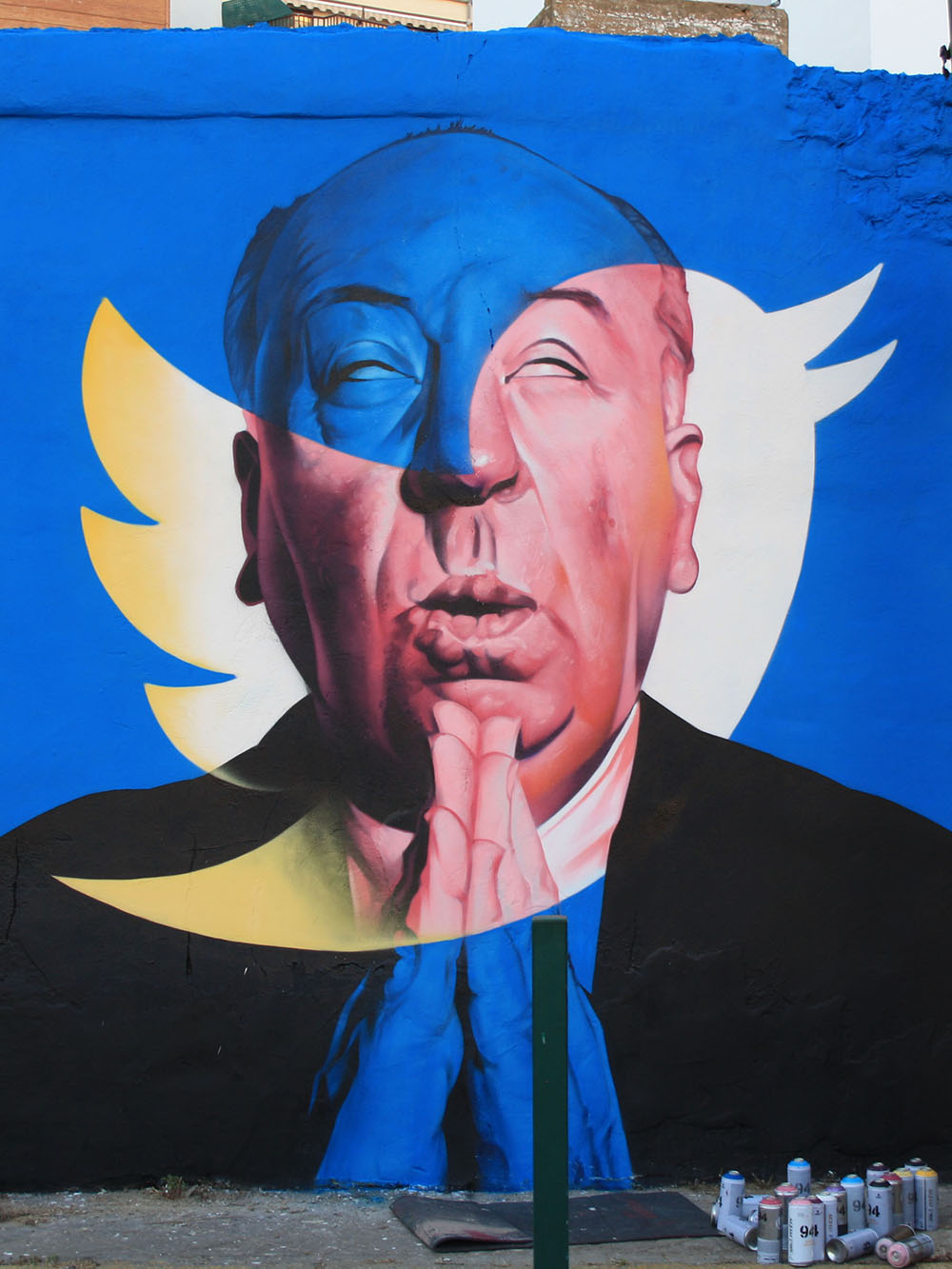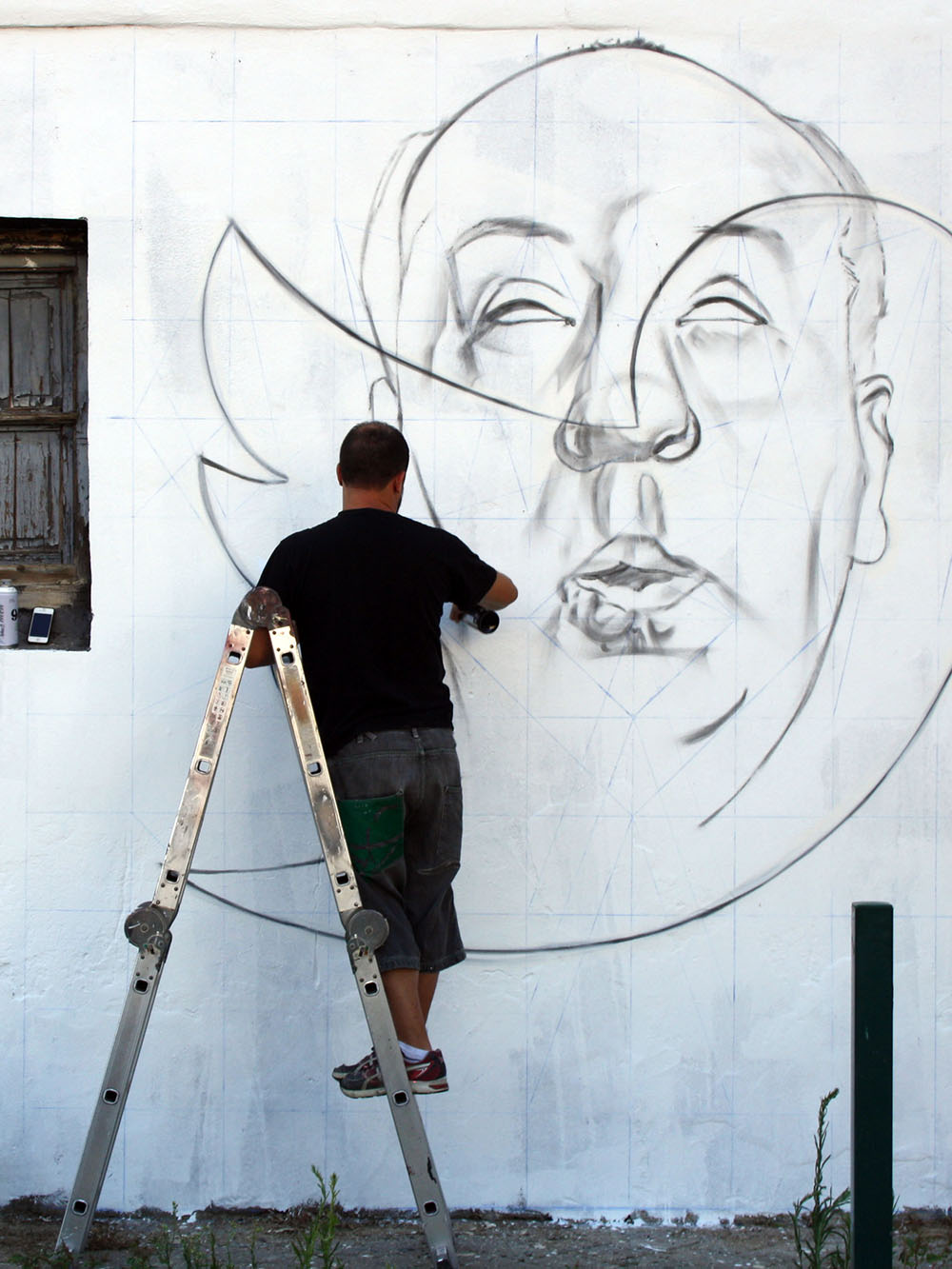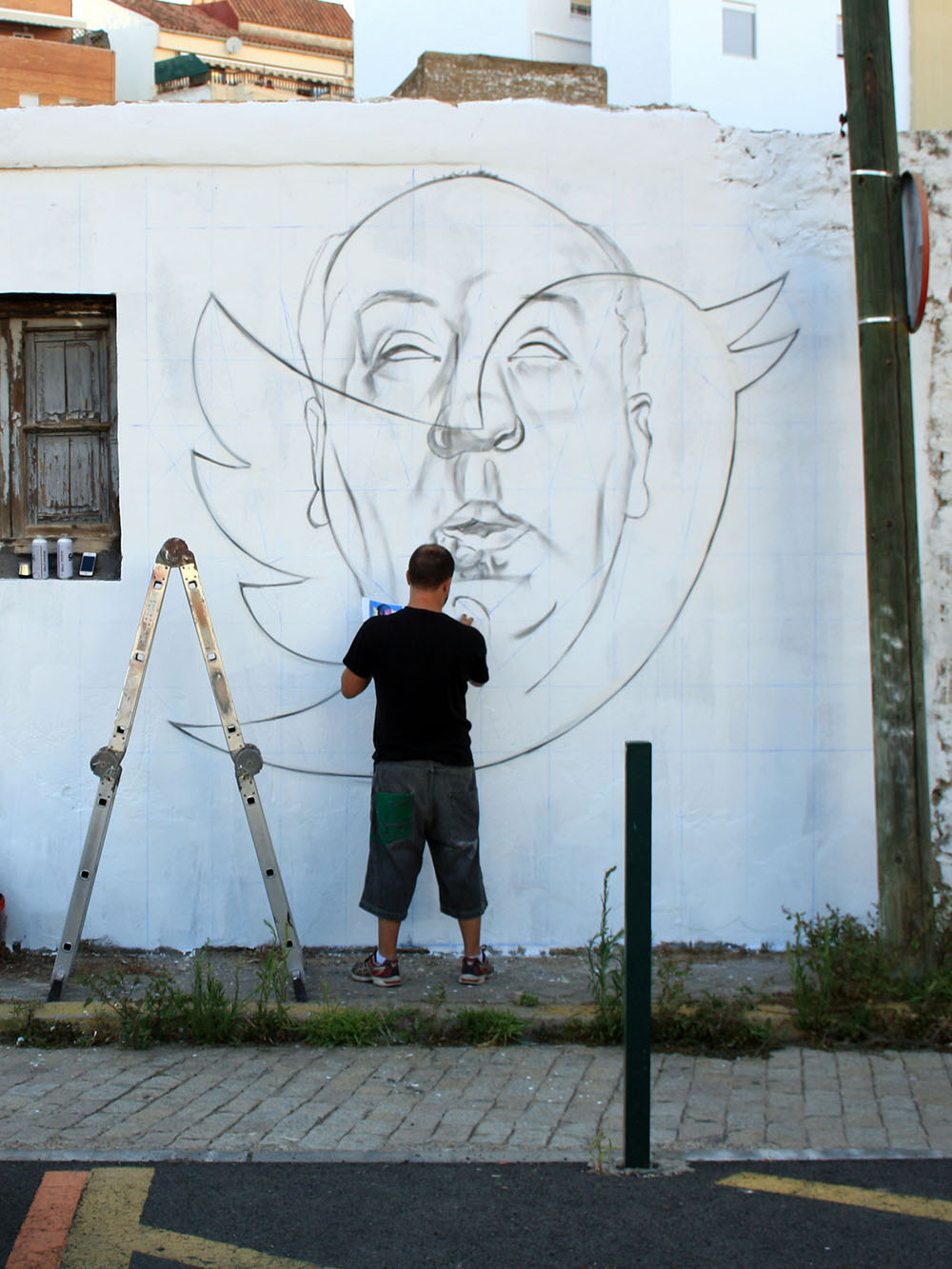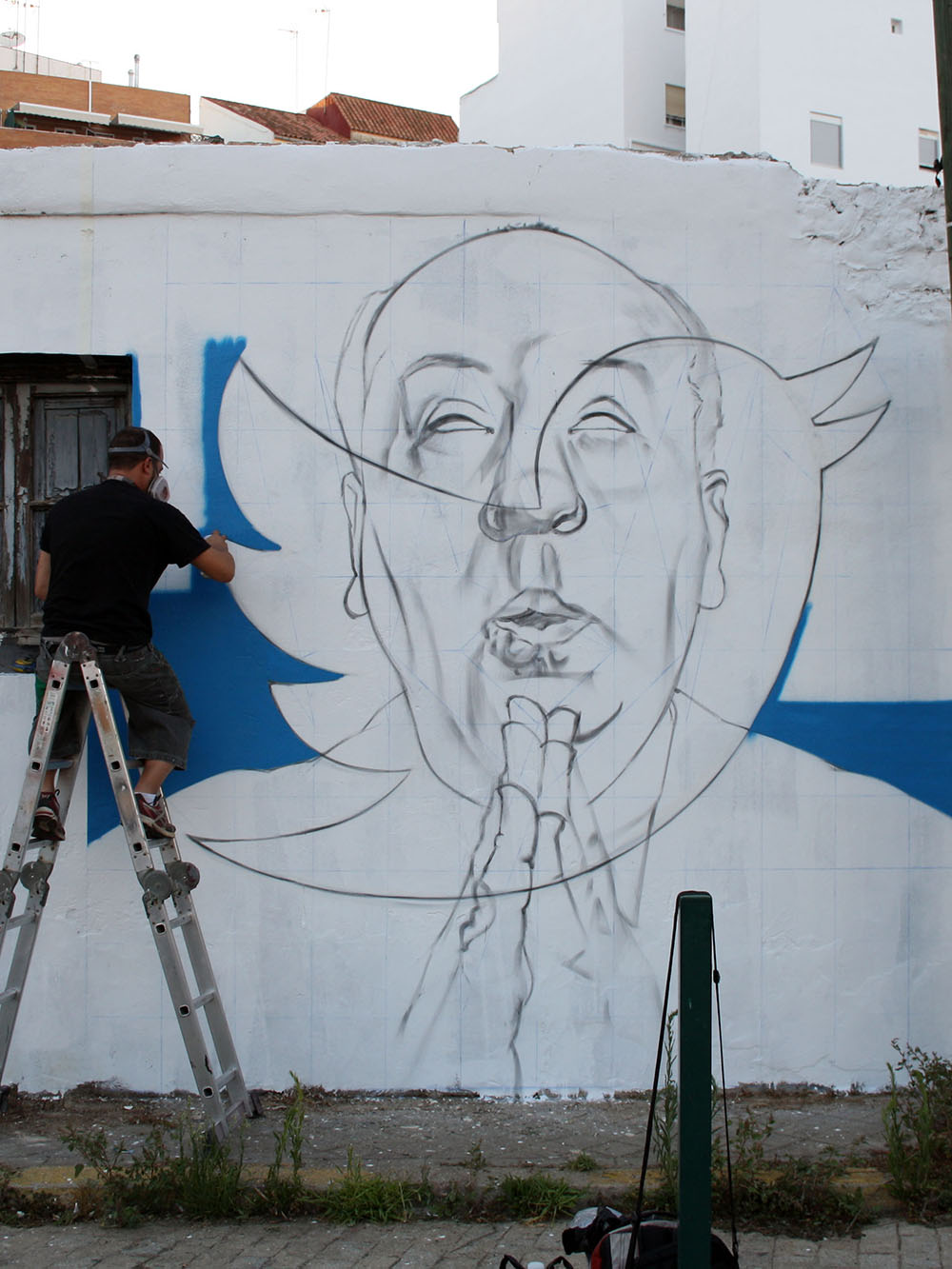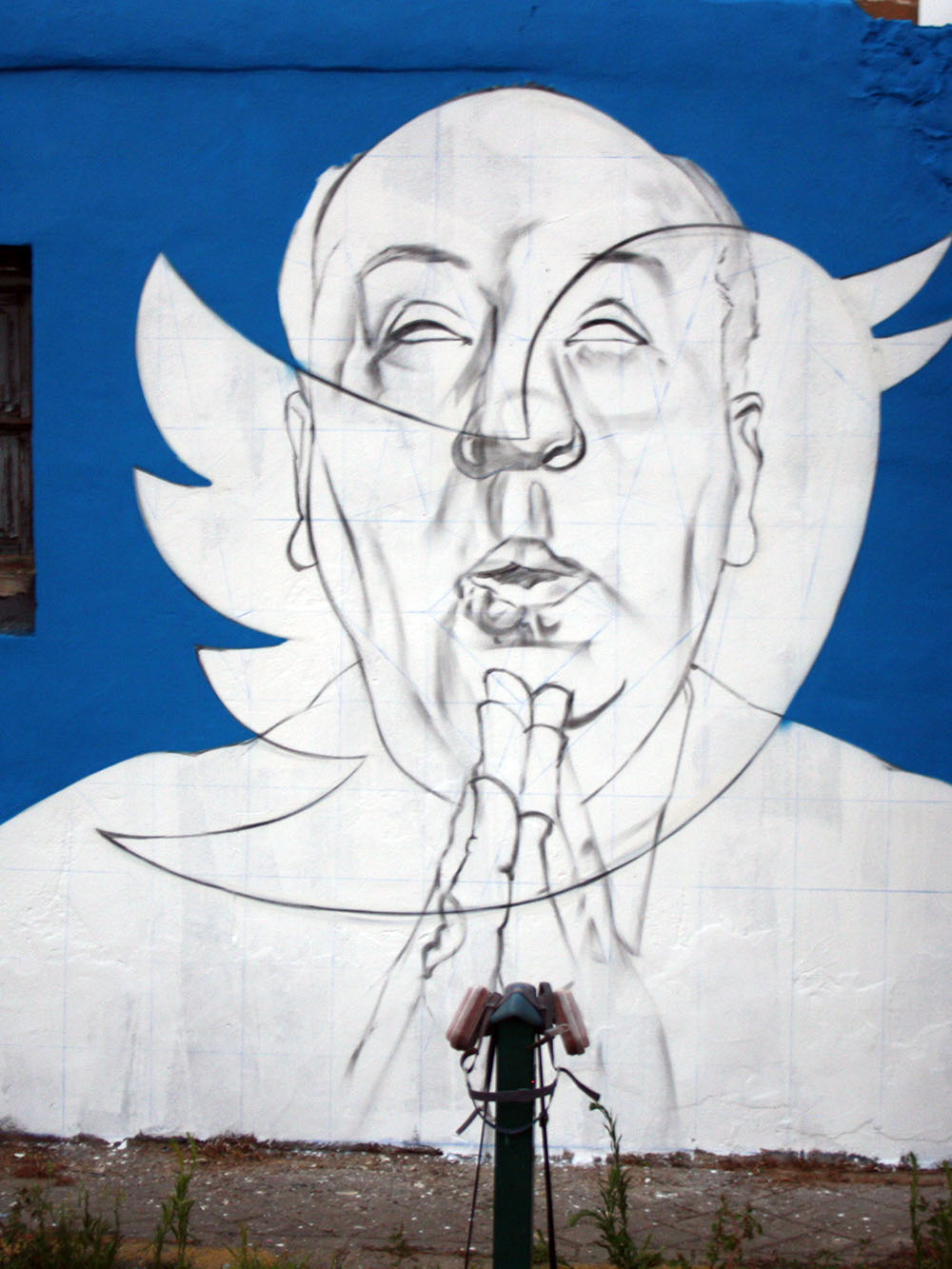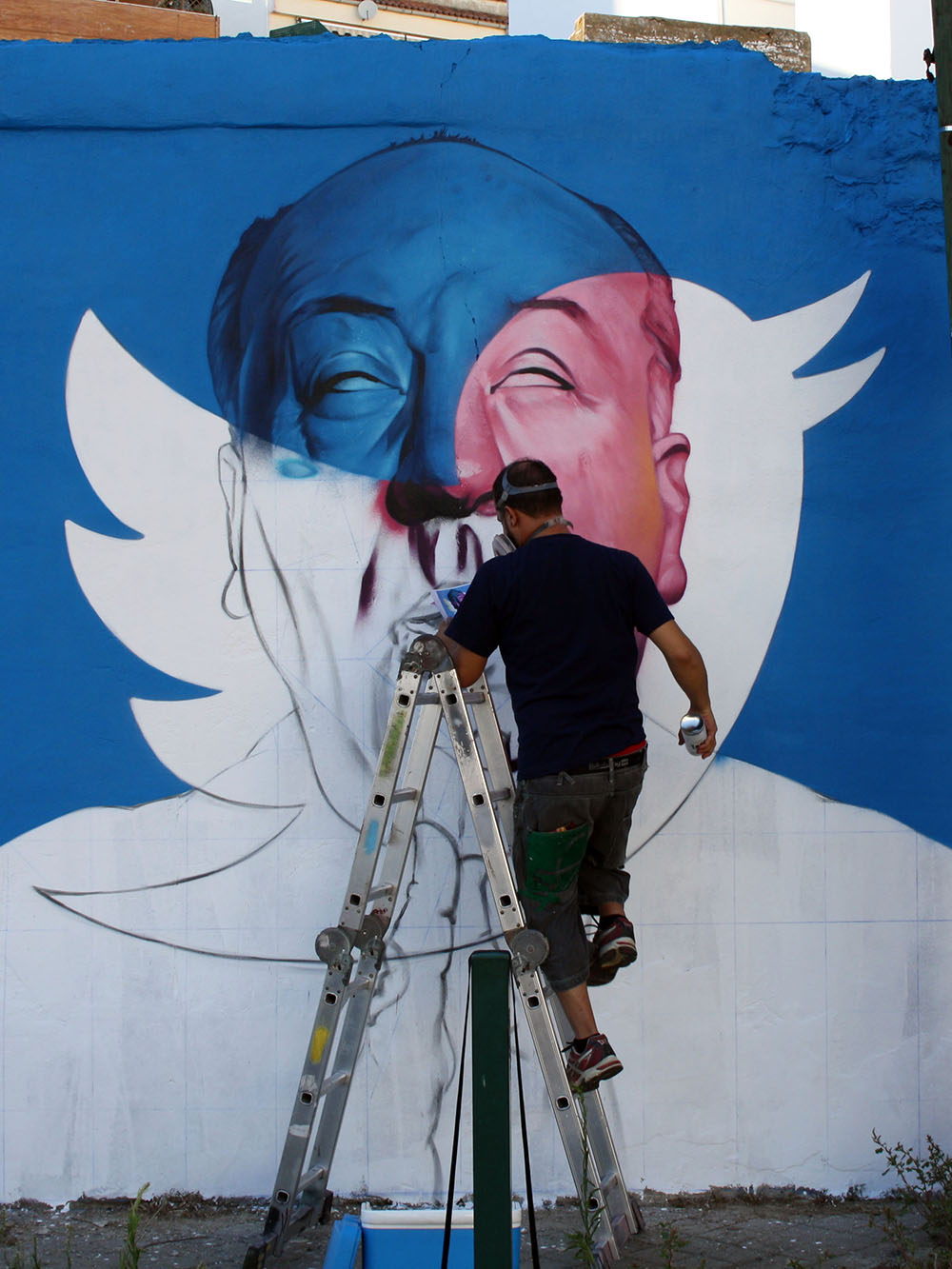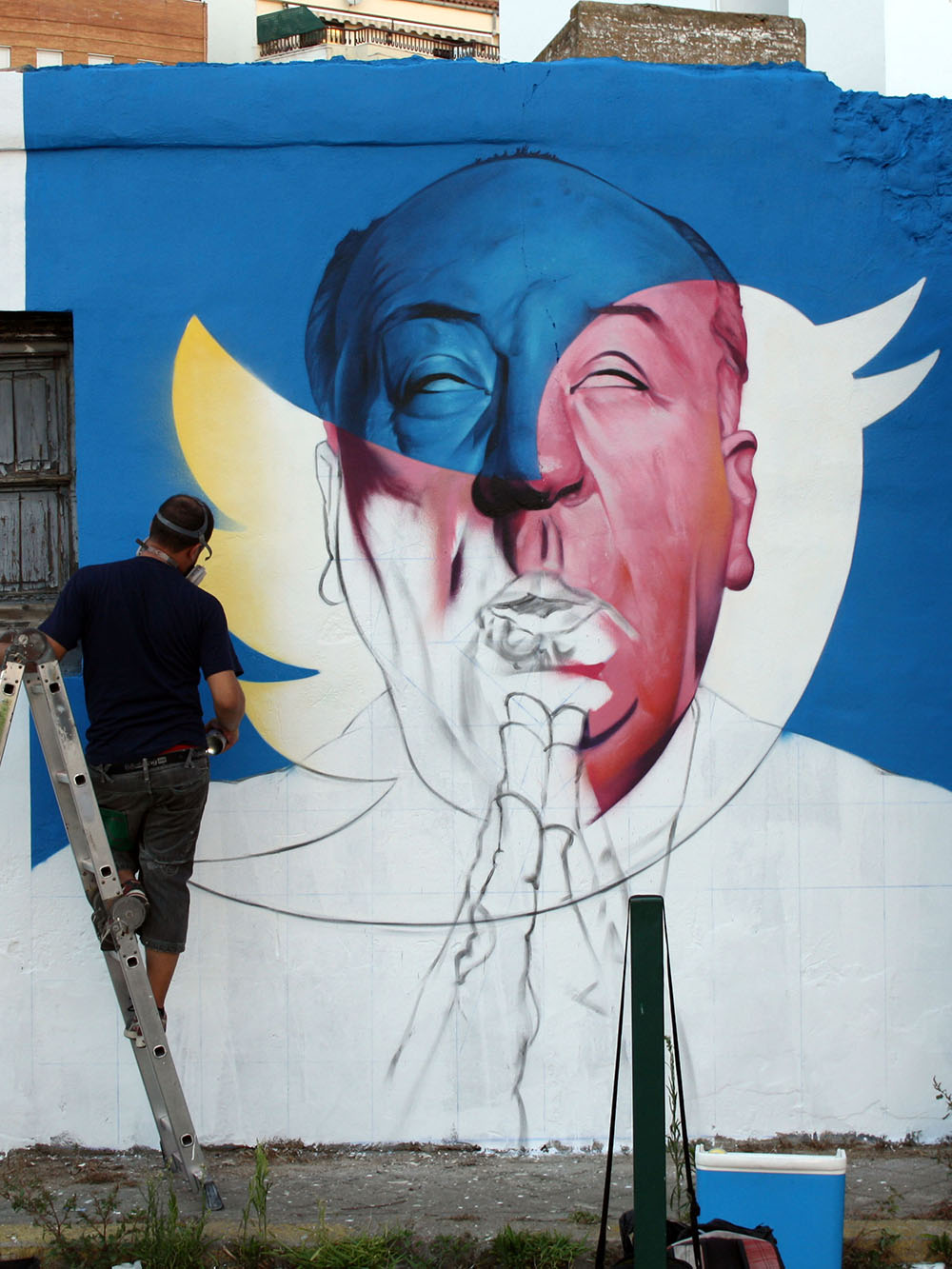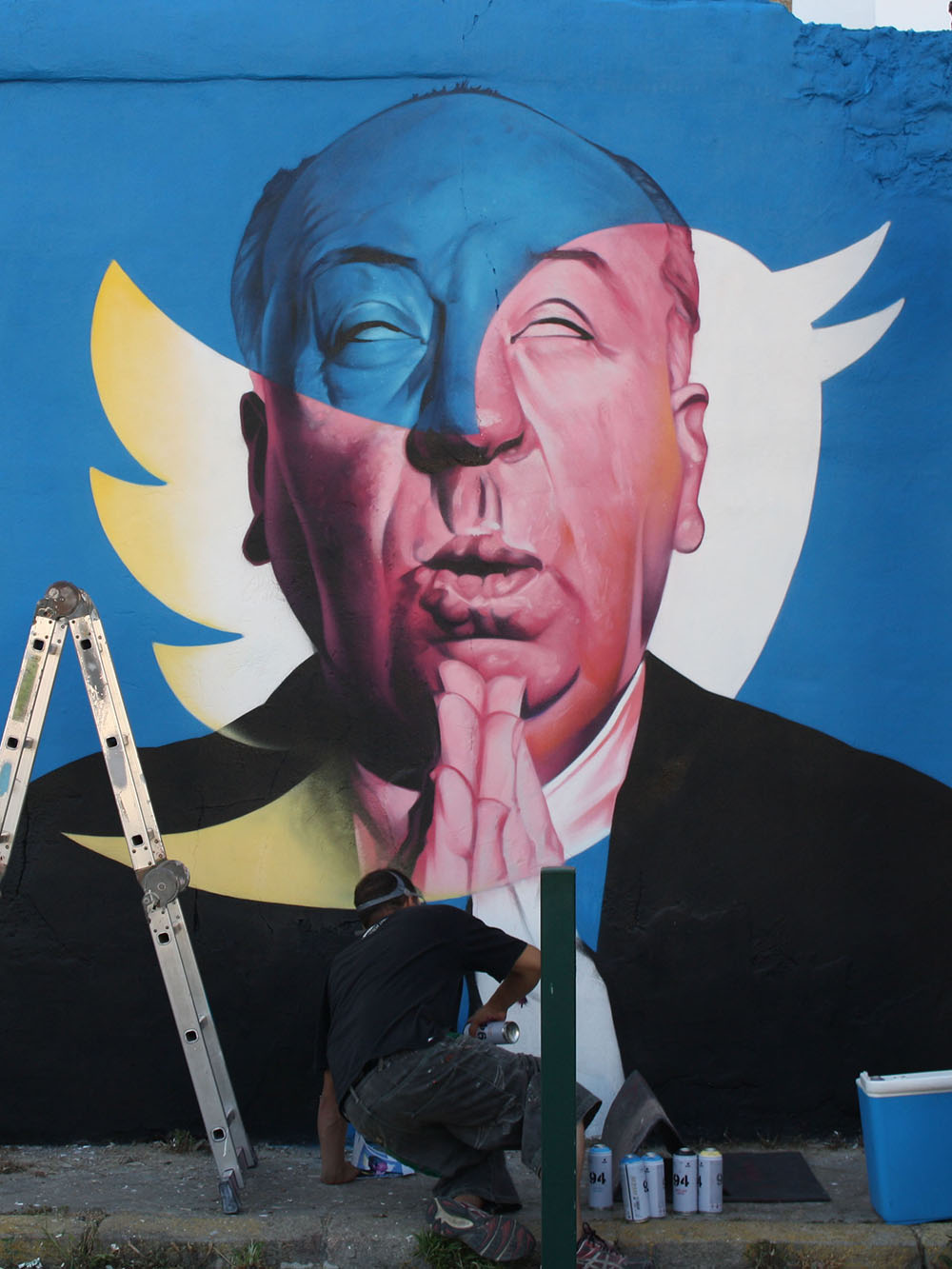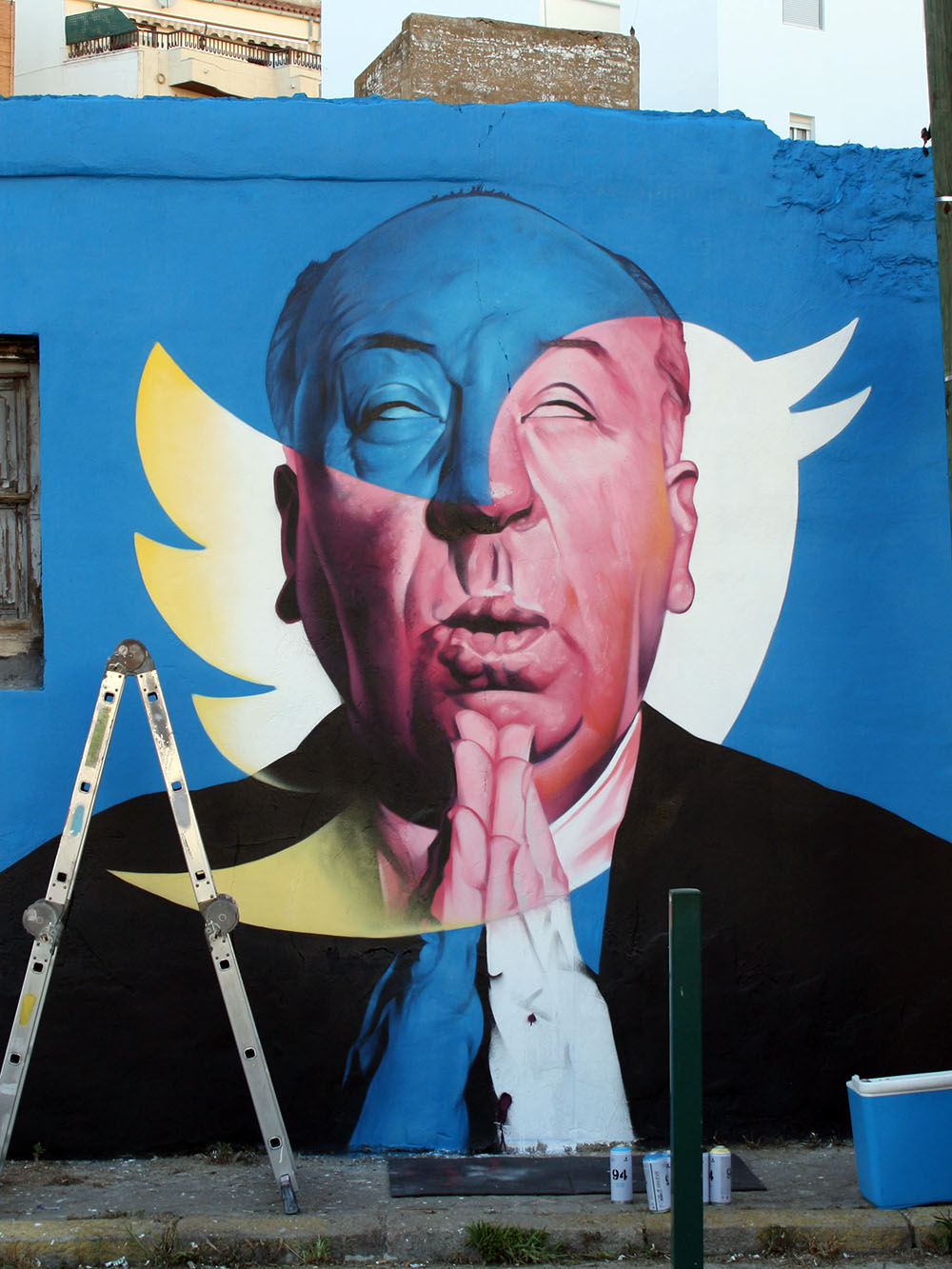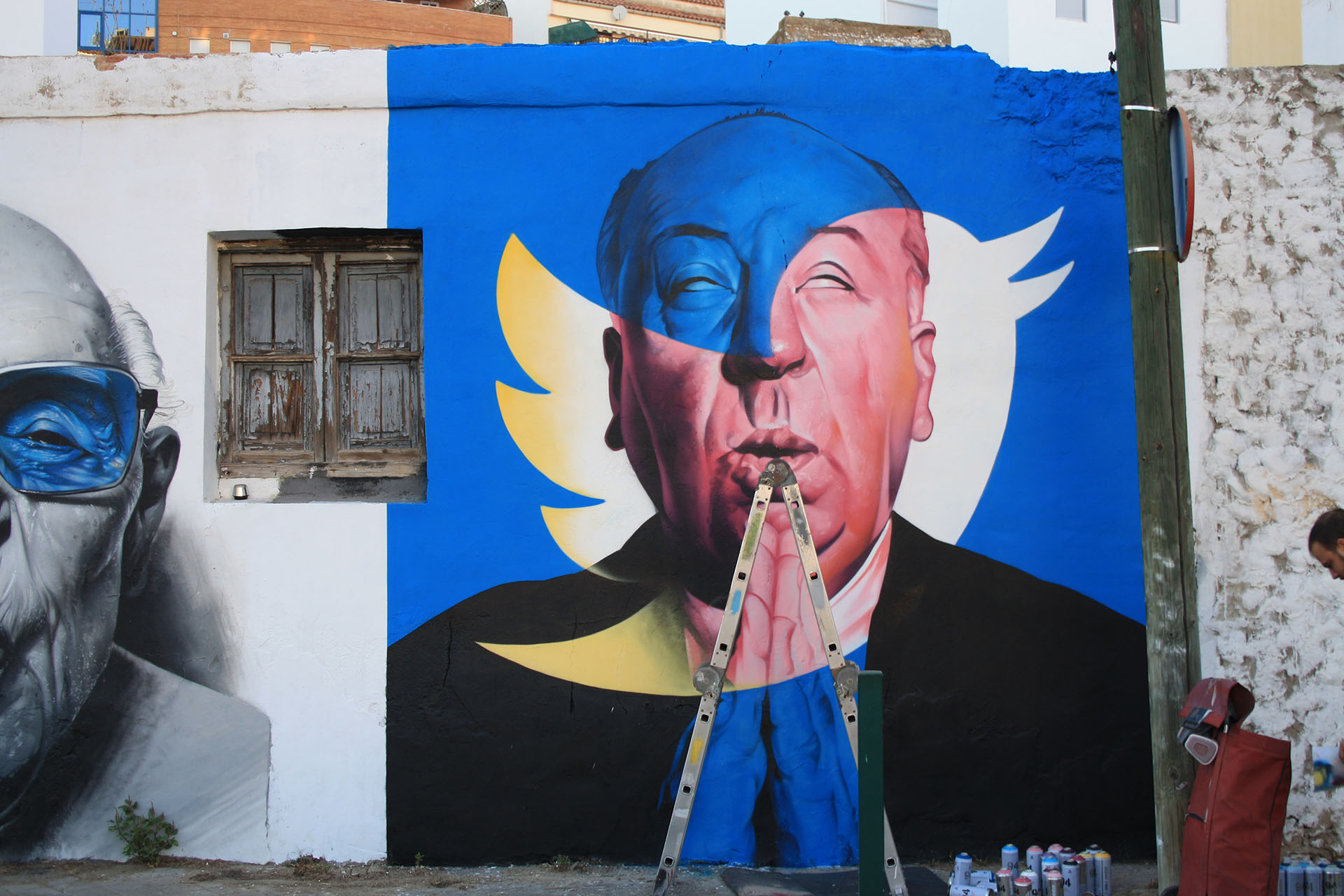Street Art Interview Questions to MANOMATIC
Has graffiti succeeded in attaining a unique position in the institutionalized contemporary art?
I would like to start talking about the beginnings of graffiti as we understand that word nowadays because it’s a term with a lot of connotations. If we look back at the origins of graffiti in the USA, we should say that everything started when a road hauler began putting his signature everywhere he went. Since then, groups of youngsters started signing too and competing between them to achieve a beautiful calligraphy and make signatures more attractive using colors and fillings.
“It was a period of competitive evolution – in the nicest sense of the word.”
It wasn´t until some years later that graffiti started to be regarded as something artistic and countercultural since its creators didn’t regard it as an artistic manifestation at first. Graffiti, as I understand it, has been evolving into something bigger and better because of that constant need of the human being to go beyond. It has got better up to the present moment when unquestionable works of art are being created.
However, graffiti and urban art as a whole should be distinguished. Graffiti in itself is something that doesn’t have its own place in museums yet – only that school of graffiti that has evolved into a more exclusively artistic tendency is the one that has been given a place in museums and institutions. So there is a clear distinction between graffiti artists and mural painters, who work in open spaces. Graffiti artists’ view of their work as something independent and countercultural is what constitutes the core of urban culture linked to graffiti as we know it today.
“There is also orthodoxy in graffiti, some non-written but well-established rules.”
These days, there are artists whose only aim is to draw graffiti, and they’re not interested in other urban art expressions. Apart from them, there are some people that have other interests and concerns: not detaching themselves from the world of graffiti, they combine a more artistic position with another one that could be placed out of institutionalized culture. There is also orthodoxy in graffiti, some non-written but well-established rules. Nevertheless, this fact has not prevented some creators from evolving and seeking their own path, which has even led them to the sphere of institutions such as museums. This is due to the fact that their plastic quality is comparable to that of an artist from the academic world.
What are your main influencers in the world of graffiti?
When I started in the world of graffiti, my Influencers were mostly located in Seville, being Logan one of the greatest ones. One of my first steps in the world of graffiti was to create characters. In fact, before I started drawing graffiti, I already drew characters and Logan did that too. I saw a lot of his works, which were spectacular and had very personal characteristics. There is no doubt that his life is drawing and that can be perceived in his work.
Later on, when I could buy some specialized magazines and broaden my references, I tried to follow Rock Star within my possibilities. He is a graffiti artist that also drew characters, but with an almost three-dimensional volume. In my beginnings, the possibilities of 3-D technology really caught my attention in a period when 3D audio-visual creations were usually linked to the world of short films, fantasy, and illusion, and were not seen as commercial products. The works of graffiti writers also began to call my attention…
“… above all Okuda and his first creations, characterized by three-dimensional fonts with a very striking style.”
Some years later, I could get to know authors of other countries thanks to the Internet. One of them was Daim, a German writer in whose work can one observe a great artistic evolution. Moreover, I could get close to the works of Maclaim, a group of writers. One of their merits is the worldwide broadcasting of hyper-realistic graffiti.
“In that sense, it should be noted that hyper-realism was born within graffiti thanks to the latter group´s work and the improvement of spray paint bottles in those years:”
the high-pressure system used before made it more difficult to draw effects and details in works. Likewise, I could meet Belin, a graffiti artist from Linares who works at worldwide level nowadays, making hyper-realism in graffiti reach its peak. From my viewpoint, Belin is a representative of the highest quality in that style today.
Out of the world of graffiti, along with my career, I was keen on artists such as Caravaggio, and I even did graffiti cover versions some of his works. However, I’m not the kind of person who is interested in Art History, as my artistic interests always had another aim. I entered the world of graffiti and I got to know about graffiti due to my interest in aesthetic quality and color arrangements, as well as the huge creative freedom that I noted in this type of artistic creations. I have to say that there has been a great artistic quality in the world of graffiti for a long time in Seville, but this has been fading in recent years.
A lot of your works not only awake an interest that has transcended frontiers but also they succeed in connecting with the general public´s sensibility, with people that are not usually keen on graffiti or contemporary art.
Do you think that art shouldn’t be conceived only as something separated from the feelings of the majority of people?
The works that I’m currently making – call them realistic or hyper-realistic – are creations that are very well understood in the world we’re living, as we´re very used to the world of the image, the audio-visual world. Anyone who examines my work could rapidly rate it and say if it´s well or badly done. People can tell what they are looking at and its resemblance to reality, that’s the reason why some of my works have become so popular. Nevertheless, I don’t want to limit my work to that hyper-realistic aesthetic: through my work and through that channel of communication that it’s open to any kind of public, I want to be able to communicate something more: a message or a state of mind.
I like communication and not encryption, as I believe that works should touch the public.
“Art should touch, it should communicate, and if it doesn’t it´s not worth it, no matter the verdict of a reduced group of people or art critics.”
Even if it’s true that people that know about art could experiment a wider range of sensations thanks to their formation and sensibility, I realise that there are certain circles of artists and people in the world of art that enjoy the existence of differences or social distinctions based on the knowledge of codes that the popular sensibility doesn’t share. This being said, there are also people who just like art and enjoy ‘encrypted’ art as much as plain or popular art. Of course, the interesting thing for me as an artist is to communicate and shake as many people as possible.
Usually, your graffiti portray characters and typical features of contemporary pop culture, such as images that reflect a revision and a reformulation of previous artistic works.
To what extent do you think it’s enriching to establish that dialogue between previous artworks and the types of plastic expression used today?
I´m not that focused on portraits nowadays, as I believe that evolving and not getting stuck in a specific genre is crucial. I’m not interested in becoming exclusively a portrait artist of the popular either. I think that closing stages in my artistic career
In your artistic production, hyper-realistic representations of features and human faces come together with visual metaphors of great expressive power.
How do you achieve that interaction between form and content? Do you usually think about the message you want to convey first and then search for the adequate image for it?
When I’m going to make a work in the street, I always prepare something previously at home, as I know what I´m going to portray in advance. On the other hand, I have two clear aims in my works: there’s the aesthetics, which I think are imperative; and there’s the conceptual part of the work of art, which I consider as the moral dimension of the artistic process.
I mean, if I’m lucky enough to have a medium to touch passers-by, I think it’s not good to take advantage of society or not to reward
For that reason, I view my job as a graffiti artist from an artistic perspective and a social perspective too. One has to give the public something more than the usual ‘look how good I’m doing it’. Aesthetics are very important to me, and the aesthetic should be as striking as possible to open up the channel of communication with people and, finally, for me it´s imperative that the use of a public space positively reverts to the public.
Have you never felt disheartened as you witness the process of destruction of your creations?
This process is seen as very short in time with regards to the life of a human being, but at the same time it’s poetical – it conveys the metaphor that we must enjoy things while they last, we must love and enjoy things even when they´re not at their best, despite the current tendency that new things are the good and beautiful ones, and old things are worthless.
Photography has been in charge of the imperishability of graffiti and nowadays, It’s true that the original artworks can no longer be enjoyed in the streets with time – and taking photos of the artwork and uploading them to a website doesn’t feel the same. I think that graffiti artists shouldn’t be so proud in that aspect. We should accept the fact that artworks don’t last forever and that there´s nothing wrong with that.
“However, it’s true that most of the time the ephemeral nature of graffiti conditions its final quality.”
Some of your works clearly reflect your preference for colossal formats.
Is this only due to an adaptation of the dimensions of your works to urban spaces, or is it that you conceive their dimensions as an expressive element to reinforce a message or an idea?
I believe that this question could be seen from many viewpoints. A big artwork is not necessarily a high-quality artwork– although it´s true that the impact that a big artwork generates in the public could be greater than the one generated by a smaller one – not necessarily though. If I could, I would always draw in huge walls, but it´s not something essential to me. The important thing about my artwork is that its message reaches the public. These days, big-wall drawing is a trend, and if you have the economic possibilities to draw on a large scale, most graffiti artists like making the most of that.
This process is seen as very short in time with regards to the life of a human being, but at the same time it’s poetical – it conveys the metaphor that we must enjoy things while they last, we must love and enjoy things even when they´re not at their best, despite the current tendency that new things are the good and beautiful ones, and old things are worthless.
Photography has been in charge of the imperishability of graffiti and nowadays, It’s true that the original artworks can no longer be enjoyed in the streets with time – and taking photos of the artwork and uploading them to a website doesn’t feel the same. I think that graffiti artists shouldn’t be so proud in that aspect. We should accept the fact that artworks don’t last forever and that there´s nothing wrong with that.
“However, no doubt that the broadcasting of an artwork is done nowadays in social media because most people don’t have enough time or the necessary resources to physically see the graffiti.”
“The key is to make a good use of the resources available in that specific moment.”
The beautiful thing about urban art – the art of the streets – is that works have a beginning and an ending.
Translated from the original interview (Spanish) by Julio del Campo Gómez

